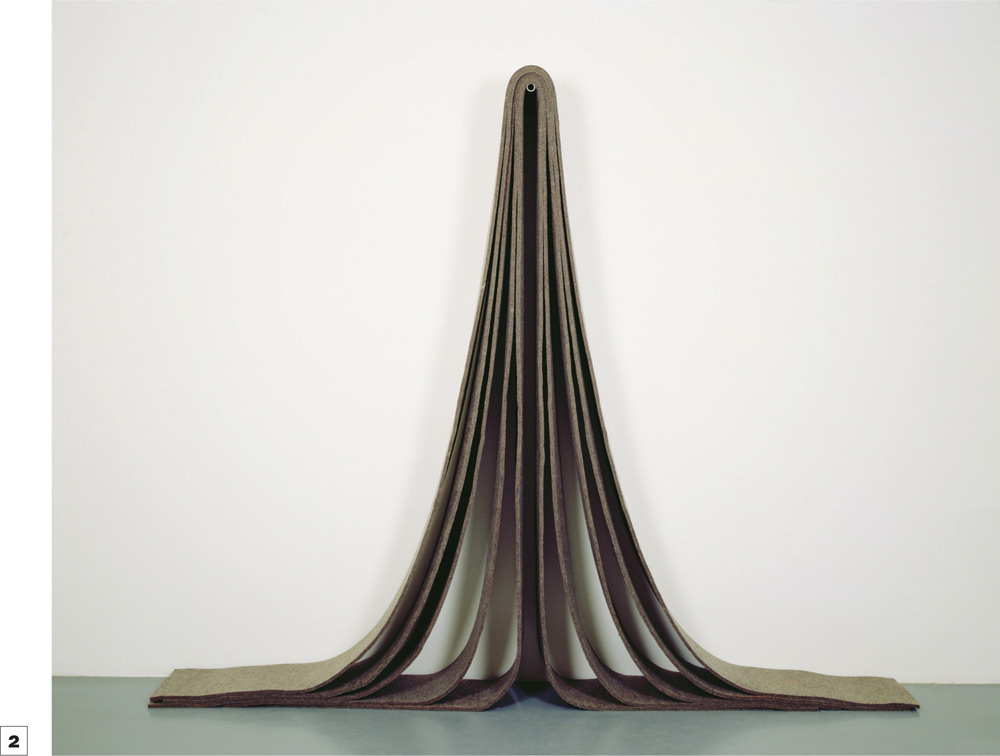 Jackson Pollock (1912–56)
Jackson Pollock (1912–56)Autumn Rhythm Number 30, 1950, Oil on canvas, 105 × 207 in (266.7 × 525.8 cm)
ART WORKS CAN BE ENGENDERED BY ENGAGING IN PRESCRIBED PHYSICAL PROCESSES
Instead of engaging in complex, intuitive decision making in producing a work of art, some contemporary artists have chosen to adopt an approach of simply carrying out a mechanical process. The American painter Jackson Pollock (1912–56) abandoned his early figurative work to make pictures by swinging paint across large canvases using brushes held well away from the surface to form long swirling arcs of splattered pigment. The resultant formations derive from the largely serendipitous distribution of the paint. Various sculptors quickly followed Pollock’s example, most notably Robert Morris (1931–), who produced many works in which the end product is defined by the physical process it took to make it. Works in felt, for example, might be folded, cut, and moved in various defined ways until the work is deemed to be finished.
One compelling idea behind the notion of art as process is that artworks are the result of the movements of the human body, that they are necessarily defined by our physiology and our mechanical prowess. It invites us to make artworks that do not carry the traditional baggage of art, the requirements that it hold meaning, convey the intentions of the artist, and provide complex kinds of aesthetic pleasure. Writing about such works in 1952, the critic Howard Rosenberg observed, “What was to go on the canvas was not a picture but an event. The big moment came when it was decided to paint ‘just to paint.’ The gesture on the canvas was a gesture of liberation from value—political, aesthetic, moral.”
The drawback of this idea is that it jettisons most of the notions of what many find interesting in art—the control of mediums and elements in ways that transform our experience of the world and provide various kinds of aesthetic pleasure.
 Jackson Pollock (1912–56)
Jackson Pollock (1912–56)
Autumn Rhythm Number 30, 1950, Oil on canvas, 105 × 207 in (266.7 × 525.8 cm)
 Robert Morris (1931–)
Robert Morris (1931–)
Untitled, 1973, Brown felt
Several pieces of felt are draped in sequence over a pole. The form of the work is simply a result of carrying out this process.
